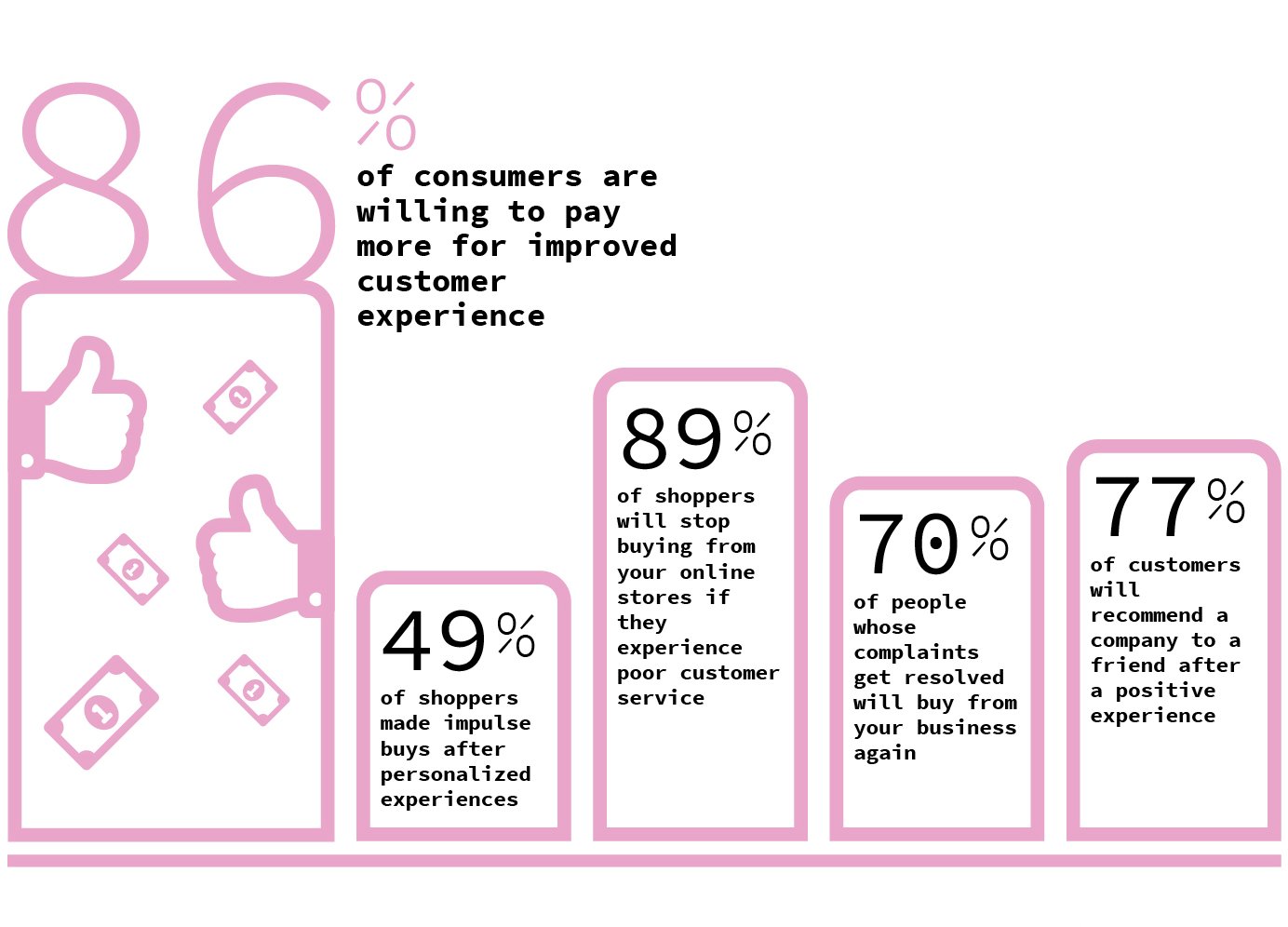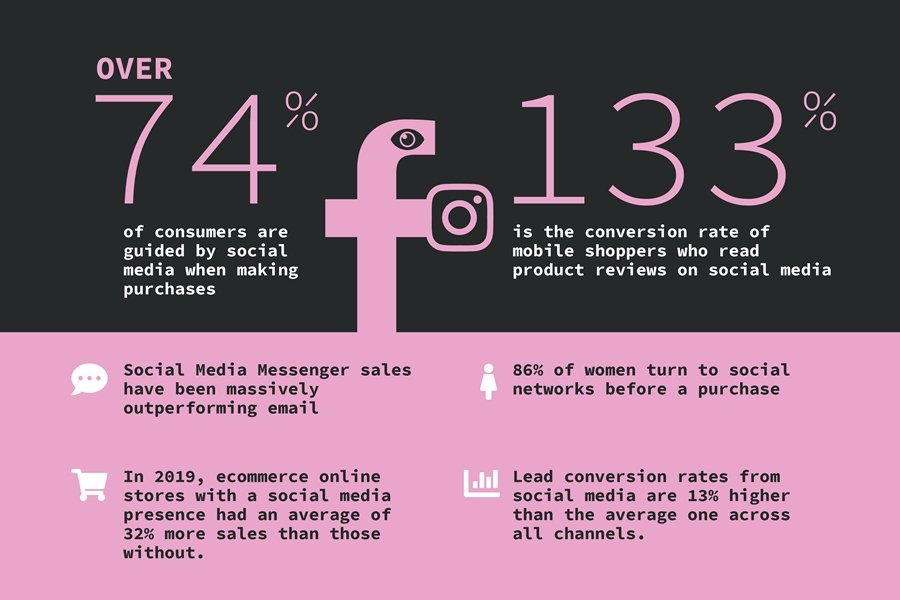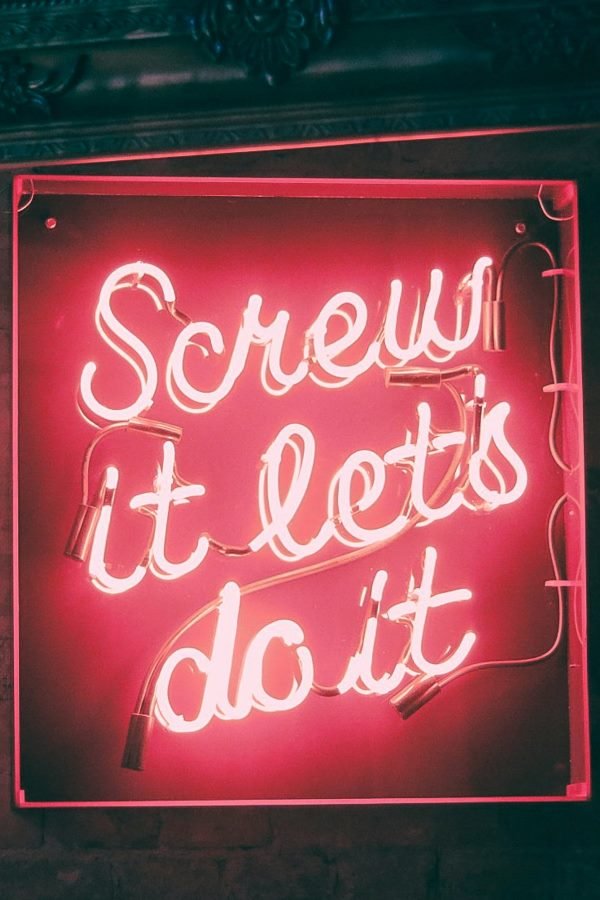
I. CS Takeaways:
If we had to describe 2020 with one word, that would be “adaptivity”. While countries worldwide are faced with this new challenging reality of economic decline, social distancing rules and fear of a new COVID-19 wave, businesses are divided in 2 categories - “winners” and “losers”. In this marketing case study we are focusing on E-commerce, which has come out as one of the winning industries internationally. Our aim is to present these businesses with a comprehensive map of what is currently happening in the sector, as well as the trends affecting it and dictating the strategies for marketing in e-commerce. We also demonstrate why digital marketing and branding strategies are essential in e-commerce, and how you can do digital marketing for ecommerce websites. Let’s check out some of our key takeaways:
1 - Amid this economic crisis caused by COVID-19 e-commerce has experienced a spike up worldwide & online shopping has become the “new normal”.
2 - E-commerce sales in Indonesia are expected to continue growing even post-Corona.
3 - Emerging consumer trends such as Online groceries shopping will have a lasting impact on people and will create new buying habits.
4 - Impactful and strong branding is what will set online shops for success.
5 - A comprehensive marketing strategy for online retail stores contains a variety of communication tools, and requires a solid action plan.
II. What is happening on the global economy scene, and how E-commerce businesses are benefiting
On a global scale, the Coronavirus has affected the economy massively and caused it to spin downwards, with many countries doomed to enter a recession. There’s no doubt that this crisis will lead to great changes across business sectors, which we can already observe happening. The high levels of uncertainty are forcing some companies to completely re-evaluate their strategies and be as flexible as possible, while new governmental policies are being introduced. Whole industries are being disrupted, some are filing for bankruptcy, while on the bright side new opportunities are emerging as markets are shifting. One thing is clear -
the pandemic is going to be the major catalyst for the post-COVID social and economic landscape, and how businesses decide to react to it today will define their future.
Amid this economic chaos of whole industries struggling to survive, e-commerce has experienced a spike up worldwide. With social distancing measures in place, governments have been recommending online buying instead of the traditional in-person shopping, and many people prefer this alternative in order to avoid getting the virus. It can be seen that online retail traffic has significantly increased since January this year (source: Statista), which is a result of millions of people being stuck at home during the quarantine period.


There has been a dramatic increase in demand for certain product categories and digital services, namely online conference tools, educational courses, electronics, groceries’ delivery, and many others. Brick-and-mortar businesses, on the other hand, are putting their efforts into switching to e-commerce, thus ensuring that they continue operating. These changes concerning the way that we purchase today are shifting people’s buying behaviours, which will certainly remain affected even post-pandemic. Even as social distancing restrictions begin to loosen up, people are not planning a quick return to physical shops soon and over 40% of them expect to shop online more frequently after the outbreak.
III. The perspectives of E-commerce businesses
It’s clear that many businesses will find it challenging to survive through this pandemic. However, the current situation, just like any economic crisis before it, holds many opportunities apart from the challenges. Giants such as Zoom, Amazon and Slack are the big winners, and companies who follow similar business models are currently benefiting. While shopping centers, restaurants and office spaces were shutting down, and in some countries continuing to be closed, other sectors were booming and are still on the rise. With consumer demand and purchase behaviour shifting dramatically due to the Coronavirus, E-commerce seems to be the big winner across the globe.
Looking at South-East Asia, major e-commerce players like Lazada, AliBaba and Zalora are the current leaders in the market. Another huge SEA e-commerce platform, Shopee, has experienced a colossal web traffic as a result of the pandemic, which led to a 111.2% rise in orders in the first quarter of 2020 compared to the same period last year. Leading online groceries delivery companies such as RedMart and HappyFresh have been benefiting since the start of the crisis as the majority of shoppers have switched to purchasing their food and other essential products online, which will most likely continue even post-COVID. Such companies have an immense advantage in comparison to bricks-and-mortar retailers, who have been dramatically affected by the imposed lockdowns. Across the region, even niche e-commerce platforms have experienced an unprecedented growth in visitors.


In Indonesia, where all industries have been affected in their own way, the virus outbreak has created extremely favourable conditions for e-commerce businesses. Tokopedia - the e-commerce wizard - has seen enormous growth of sales in certain categories since March, such as personal care, health products and household necessities. The popular GoFood delivery service, which is part of the Indonesian giant GoJek, has experienced a 10% jump in orders for the short period between April and May, which only shows that e-commerce is still on the rise. E-commerce in Indonesia will continue to increase and is expected to reach 35 billion USD this year, reports The Jakarta Post. With social distancing regulations in place and a fear of getting infected, new consumer trends, such as online grocery shopping, have emerged in the country. Electronics are not the only sought after products at the moment - gym equipment, fashion and beauty are among the top e-commerce categories for 2020 so far, and are still on the rise.
Overall, the future outlook for e-commerce is more than optimistic, with 95% of shopping expected to be happening online by 2040. The pandemic has undeniably sped up the digitization process worldwide, which in turn has encouraged consumers to increasingly turn to online retailers. With big societal changes currently in motion, the e-commerce landscape will be quickly developing in the upcoming years. At the same time, bricks-and-mortar retailers cannot ignore the shifting buying habits of consumers anymore, and should embrace these new opportunities in e-commerce. Businesses must adapt to the new market demand - this is the only way for them to come out of this crisis as winners.
IV. Trends in the E-commerce industry that are here to stay post-COVID & what that means for you
Why are trends so important to track? In an ever-changing market, and especially given the unpredictable nature of the pandemic, smart businesses should keep an eye on what is currently happening across the industry and on emerging consumer demands, in order to avoid lagging behind the competition. This way it is possible to anticipate future changes, cater to consumers more effectively, and upgrade your business whenever it’s the right time. What’s more, following trends enables you to be a market leader.
Our team at Brut has gathered some of the most significant trends in E-commerce worldwide which are the forces that will shape the post-COVID business landscape. Are you curious to find out what will be the key directions for the industry to follow in the next months? Then dig in!


1.) E-commerce as a time saving and more efficient alternative to physical retail
The enforced lockdowns worldwide have contributed to millions of consumers turning to online purchasing instead of the traditional going to the store. In fact, many didn’t have another choice - in order to prevent themselves from getting infected, they had to adopt new online shopping habits. For a lot of families, online groceries, fashion and entertainment shopping will replace the actual store visit for the months to come. If some consumers were reluctant to trust e-commerce retailers before, now they are motivated to turn to them given the situation. This creates immense market opportunities for e-commerce and bricks-and-mortar businesses alike. The key words here are: variety, 24/7, convenience. Tapping into this need is what your business needs to be focusing on right now!
2.) Online Groceries Shopping
Purchasing groceries online is a new trend that is here to stay. Due to the outbreak there’s been a massive boom in people preferring to have their groceries ordered online and delivered to their doorstep, instead of going to the store. For many people who belong to the health risk groups, this has been their only option to buy food. Not only huge supermarket chains have been profiting from this - medium and smaller retailers also try to cater to the rising demand, whether they offer groceries or other essential goods.
In South-East Asia, consumers were asked whether they intend to continue online groceries shopping in the future, one in every three said yes. In the past few months online groceries have been on the rise across the region, and some businesses, such as Lazada in Singapore, are experiencing a considerable jump in sales.
3.) The new work-and-stay-at-home culture
When many governments imposed lockdowns a few months ago, people worldwide had to adapt to working from home. For many, it was their first time ever having to do that, and for companies it was a challenge to successfully switch to online work only. It seems like telecommuting is becoming the norm, and will continue to be preferred by workers and employers alike even post-COVID, and companies such as Twitter are enforcing it permanently. Ultimately, working from home means spending much more time online.
What does that mean for E-commerce retailers? Firstly, products such as electronics, stationary supplies, home office furniture, as well as clients and colleagues collaboration software will be of high demand. Secondly, people working from the comfort of their homes makes them way more prone to making house upgrades. Who wouldn’t want to improve their living space when they’re spending the majority of their days inside? The surprisingly booming demand for some specific goods such as coffee, gardening items and books is overwhelming retailers. Lastly, “the great indoors” experience is also challenging for the traditional way of educating and coaching people across the globe. The social distancing measures have also contributed to the increased need for online educational facilities and e-learning platforms.


4.) Customer experience is marketing’s new top priority
Experience is a top priority for the modern consumer, and marketers are striving to meet and even exceed their expectations. With customer service technology developing quickly, people are becoming used to having a seamless online purchasing experience, which raises the standard for all e-commerce businesses. Personal engagement here is key, and in particular delivering what the customer actually needs, and not simply what you want to sell him.
What exactly is customer experience (CX)? The short answer is - it is all about the interactions between your brand and the end user throughout the entire customer journey - from the first touch point until the last one. From welcome emails and post-purchase review forms to social media messages, each interaction counts. CX is what drives consumers to choose you instead of the competitor, write a good review and eventually become loyal clients. It is about ensuring that at the end of the purchase the buyer had a meaningful and beneficial interaction, so that he wants to return to your online store again and again. Ultimately, this is CX’s goal - to maximize the Customer Lifetime Value of a business.
There are many elements that can be used to improve the CX of your customers. One of them is Social messaging, which is on the rise, mainly due to its quick and easy access. Users increasingly prefer to reach brands on their favourite platforms, such as DM’s (Instagram), WhatsApp and Messenger (Facebook). Another essential element is conveying a consistent brand image across all communication channels that evokes the same feelings for consumers. You can read more about how to improve your CX here.
5.) Social (media) shopping
E-commerce meets social media! Welcome to the perfect shopping experience, where you don’t even have to leave the social media platform you’re browsing in order to purchase your desired item. This trend has more than doubled sales for brands for the past two years, and is increasingly becoming users’ favourite way to shop. The top 3 social shopping platforms are Instagram, Pinterest and Facebook.
So, what makes it so attractive to consumers, and more importantly - why should every e-commerce retailer jump on that trend? To begin with, social shopping embodies the perfect customer experience, as it includes elements such as recommendations and discussions, direct communication with the brand, community engagement and group participation. It enhances the whole shopping experience through compelling visuals, which are a key marketing tool in e-commerce. Social shopping is a huge opportunity to discover many prospects, and it enhances the brand’s omnichannel marketing. Retailers need to realize that people who buy their products via social media are already looking for their products.


Nowadays, online retailers who engage in social media selling have shifted their efforts from the “like” to the “buy” button, encouraging consumers to purchase directly on the platform. For people, on the other hand, being able to buy products without leaving their social profile is the ultimate seamless experience, with user-friendly advantages such as chatbot check-outs and autofill delivery address details.
6.) Omni-Channel Marketing
Every person goes through a different brand experience when they shop, meaning that there is no one universal by the book approach. This is where the omnichannel marketing strategy for e-commerce businesses comes into play. This sales method is based on a multichannel strategy whose goal is to provide consumers with a seamless shopping experience across all brand avenues. From the physical shop (if any) until the social media page, customers should be able to move with ease between the brand’s different channels and still have the same quality of experience in the end. Regardless of where their shopping route goes through, they should be able to carry out a smooth purchase in the end. Any “obstacle” en route such as contradicting information can turn your prospect away. This is why it is essential for e-commerce retailers to integrate a comprehensive omnichannel strategy.
Lastly, multi-channel shoppers spend 15% more than people who shop only on one channel, which is a fact to be considered by both bricks-and-mortar and online retailers.
Consistency, seamlessness & personalization are the key principles for a successful omnichannel strategy.
With brands enhancing their customers’ experience more and more, it will be the ones who keep their promise of an amazing shopping throughout the entire customer journey that will stand out and ultimately win their loyalty.


7.) Email marketing in e-commerce is more powerful than ever!
Despite all the technology developments and new marketing tools, companies keep on relying on email. The reason for that is simple: email drives the highest ROI (return on investment) for marketers, and accounts for 20% of traffic in e-commerce sales. Apart from delivering better results than other channels, email is highly targeted and could be personalized based on customers’ data. This allows brands to provide customers with content that they really care about, and products/services they are genuinely interested in. Staying connected to the clientele by keeping them informed about the company’s latest news, arrivals, and discounts, is another benefit of email marketing. Being personal and transactional, while at the same time inexpensive, makes it a top direct digital marketing tool for e-commerce. Relevancy is essential.
Considering that segmented email campaigns drive the incredible 760% boost in revenue, brands should be paying extra attention to your email marketing campaigns and techniques, as well as design.
V. The role of branding & marketing in succeeding as an E-commerce business
Apart from all the social and economic shifts caused by COVID-19, marketing for businesses has also been affected, or better said - it has adapted its communication approach. With people still in “safety mode”, their buying behaviours have greatly influenced the market and have led to new product trends. Marketers are finding it challenging to choose the right way to promote their products and at the same time avoid sharing the wrong message with customers. Content marketing has been on the rise since the start of the pandemic, mainly as a result of people spending most of their time at home. Connecting with people is still a priority, however it has now shifted entirely to digital channels. Inevitably, e-commerce brands are forced to modify their marketing strategies in order to adapt to the new reality of social distancing and economic uncertainty.
When it comes to e-commerce, reaching out to customers is essential right now and retailers should be aiming at driving brand awareness and website traffic more than ever. Keeping a flawless digital customer journey is a top priority for all retailers, especially nowadays when searches for “buy online” have skyrocketed. When it comes to marketing strategies in e-commerce, having a strong brand presence at this moment is what will create lasting impressions on people and turn them into loyal customers who will keep on returning even after the pandemic is over. By communicating your brand’s values & mission in a powerful & consistent way you are able to captivate and reach the right audience.
While physical businesses are cutting down their marketing costs more and more each day in order to survive the crisis, now is the chance for online retailers to act quickly and cater to the rising demand for deliverable goods. With an adequate marketing plan e-commerce businesses and retail stores can efficiently reach customers and maximize their revenue.
Do you want to be on the winning side?


VI. The Golden Circle method
To make it easier for online retail stores to plan their marketing strategy, we’ve mapped out the top key communication objectives that your business needs to follow for excellent marketing results & maximised revenue. Based on the Golden Circle theory, this guideline is concrete, practical and quick - because we know that you don’t have time for nonsense, and neither do we:
1.) WHAT: Create a Brand strategy for your e-commerce business or Re-brand your already existing one
HOW: Carry out a complete branding audit of your online shop and determine your brand’s current performance. Does your brand reflect your company’s beliefs and values? What do people say about you & how do customers perceive you? Is your brand delivering an experience worth paying for? Remember that making a profit is not a purpose, but rather an outcome. So, what is in fact your purpose? These are just a few of the questions which you need to answer - honestly & thoroughly - in order to determine which parts of your brand need improving and developing, as well as which concepts you will have to add altogether.
For start-ups, begin with building your brand identity by starting with your brand’s heart, your values and beliefs, as well as personality. You know what they say: if you do something - better to do it properly!
Not laying a strong brand base can cost you confusion, inconsistency & sales loss in the future, and nobody wants that trouble.
WHY: A strong & impactful brand strategy future-proofs your business, helps you differentiate in the market, and builds an authentic relationship with customers that ultimately earns their support in the long-run. Not only that, but it helps your company to navigate through challenges, such as the current Coronavirus pandemic, by having a clear understanding of your organization’s “why”.
2.) WHAT: Determine your Marketing personas
HOW: Each persona that you create should represent a different target segment. You can create your own Persona model that fits your brand’s needs, however the standard one usually includes important data such as demographics, lifestyle characteristics, needs and “pains”, drivers and motivators, social media behaviour, etc. Don’t forget that apart from your primary “core” audience, there are also going to be secondary groups that will be your customers, and therefore they deserve your attention as well.


WHY: Buyer Personas is what successful businesses base on their sales and marketing strategies, and what influences their design decisions. This is the tool that helps brands better understand their buyers and cater to their needs & wants more effectively. Ultimately, creating marketing personas is a step towards becoming a customer-centric business.
3.) WHAT: Carry out a complete and relevant market analysis
HOW: There are different methods to do it, but in short - you will have to assess your market from both a quantitative and qualitative side. That means determining the market size, the customer segments, the competition, the economic possibilities & challenges, legal regulations, etc. You will have to analyze already existing data, such as reports, trends and statistics, as well as collect your own research data - either by yourself or with the help of experts. The larger your business is, the more extensive your market analysis will be.
WHY: The market analysis lays the base for a successful business plan, or in the case of an already existing company - it helps spot a market potential at an early stage. It also allows you to take a deeper look into the core of your company and determine what is the true value proposition of your brand. The right data doesn’t only show you where you stand as a company - it also allows you to identify new business opportunities.
4.) WHAT: Update your SEO plan based on a complete audit
HOW: Start with an action plan which determines what exactly you are looking for, why is that important for your e-commerce website, and when you are going to make the improvements. When it comes to SEO, there are various metrics to examine. Here are some important ones: website leading time, mobile optimization, keywords ranking score, search volume, existence of broken links, DA (domain authority), PA (page authority), backlinks. Create a checklist which will help you organize the results so that you can analyze them efficiently later.
WHY: More or less 75-80% of the Google traffic goes to the first 3 search results.
5.) WHAT: Enhance the digital experience for your customers
HOW: Improve the customer journey at all touchpoints possible, so all interactions between the customer & the brand are consistent, impactful and engaging. An example could be creating a seamless purchase path, or adding a product feedback sharing possibility. Other aspects that need your attention here are ease of website navigation, usefulness of product information, and seamlessness of interaction. The key to providing your customers with a great digital experience is to treat it like a separate marketing channel, whose goal is to maximize buyers’ satisfaction with your brand.


WHY: Higher sales, engaged customers, competitive advantage, and the cherry on top: brand loyalty!
6.) WHAT: Adopt an E-commerce Subscription model (wherever possible) & maximise your revenue
HOW: The goal is to turn your one-time buyers into recurring customers by offering them to subscribe to receiving a certain product (or a whole bundle of them) on a daily, weekly, monthly, or other specific time basis. Analyze your product range, get creative and come up with new e-commerce marketing ideas for your online store on how you can create a truly useful subscription service for your customers. The key here is to offer them a product or a set that they always need (ex. Shampoo or skin care). Focus on the customer retention, rather than acquisition.
WHY: Recurring orders maximize revenue and increase your CLC’s (customer life cycles).
7.) WHAT: Turn ToFu (Top-of-the-funnel) leads into your customers
HOW: There are various ToFu strategies, however you need to decide on what fits your brand the most and serves your goals best. You can start with adding a simple “recommended for you” popup at the checkout page, or use your creativity by creating a complete Gift Guide for website visitors.
WHY: Failing to turn prospects into customers prevents you from maximizing your revenue and reaching a business potential that you aren’t even aware of.
8.) WHAT: Optimize your checkout process
HOW: The ultimate marketing strategy for e-commerce websites:
turn the empty shopping cart into an opportunity by creating the most effective check-out process for your online store.
There are tens of different techniques and tricks on how to stimulate the buyers’ willingness to purchase & tilt the scale into your favour. We cannot list them all, but ultimately the way to optimize your checkout process starts with the Checkout Design itself, continues with re-capturing buyers’ attention, and finishes with reminding them about your brand.
WHY: Seven out of every ten website visitors leave checkout without buying. That’s seven missed opportunities that could be turned into active customers. So, don’t let cart abandonment be the last interaction you have with prospects!


VII. E-commerce marketing during a pandemic: DO’s & DON'Ts
DO’s: tips and marketing ideas for (online) retail stores
1.) Track and use your metrics
The strategic decisions for your e-commerce business should be based on metrics that show both your store’s online performance, as well as each product category. In order to make informed choices on all of your company’s levels, especially marketing, tracking the right metrics is crucial. How effective are your ads? Do people tend to abandon their shopping cart and never return? These are just a few of the questions which you should be paying attention to, acting upon and ultimately resolving. Here is a list of the Top 3 e-commerce metrics that you should start tracking asap:
- Sales Conversion Rate: the percentage of website visitors who actually make a purchase; your goal is to maximize it as much as possible;
- Customer Lifetime Value: the total amount that your business earns from your average customer over the course of their life; this metric shows you how much should be your optimal acquisition cost;
- Email Opt-in Score: the people who opt to be on your email list or/and subscribe to your newsletter; since email marketing brings the highest ROI among channels, it should be your business’s priority to get as many people to sign up as possible.
2.) Enhance the customer experience with marketing
As we already explained earlier in this Case Study, customer experience represents your brand’s relationship with each client, and is therefore a key part of the marketing strategy for e-commerce websites. With 64% of buyers finding customer experience more important than price, it is a no-brainer that brands who are focused on delivering the ultimate user experience (UX) come out on top of their competition, even in such times as the COVID-19 crisis. Make sure to understand your customers’ purchase journey, and carefully evaluate each and every touchpoint between them and your brand. Is the process seamless and what could be done better? Do you provide the same quality of experience across all digital devices? These are just a few questions to start with.
3.) Create the most effective website possible
Did you know that the astonishing 40% of people will abandon a webpage if it takes more than three seconds to load? This stat shows two things: first, customers are impatient and expect a seamless online experience, and second - ecommerce brands should make sure that before everything else their web platform is working well. It sounds logical, but it is worth mentioning that designing an effortless and user-friendly website that actually helps people find what they are looking for should be the number one priority here. Functionality and usability are key.


4.) Reassess your e-commerce Digital Strategy & Content Marketing
Perform a thorough analysis of your current online marketing efforts, and evaluate how your strategy fits with the Coronavirus landscape. Many brands had to re-think their marketing goals and campaigns as a response to the changing customer behaviour and emerging needs. As the pandemic continues, content marketing is another major aspect for e-commerce sites, which needs to be carefully planned and adjusted. In addition, hot trends, such as influencer marketing for ecommerce, especially micro influencers, are always of importance when constructing your digital strategy and choosing the right communication tools.
5.) Monitor product and service categories which are on demand, and adopt and improve yours
Keep a close eye on category trends that are happening in the market. Focus on areas that are currently expanding such as remote work, education, home exercise, and entertainment, and see how your ecommerce business can cater to customers’ needs or drive their demand. If possible, adapt quickly to the market shifts by offering new product categories, or re-purposing the old ones. Creativity goes a long way here!
6.) Focus on your visual content
You might be tired of hearing that visuals matter, however now with people spending more time online due to the limited mobility, they matter even more. With the ecommerce sector getting more and more competitive each day, brands who have a strong visual presence online are standing out and catching customer’s attention. In fact, after watching a video demonstrating a product/service, a potential buyer is 73% more likely to make a purchase. That’s not all - customers perceive brands that use visual content as more trustworthy and impressive.
Put yourself in your customers’ shoes and think about what their pre-purchase journey is. Before clicking the “Buy” button, they need to see how they can use your product and make sure that it works for others. On top of that, they will surely compare your brand with others before their final decision. In this case, what will set you apart and allow the customer to virtually “experience” your products are your visuals.
7.) Build and use a right complex targeting client databases
A client database is the collective information of all your past, current & potential customers. It is a crucial part of each successful business’s marketing “toolbox”. Apart from allowing you to identify the best prospects available & to create an adequate targeting campaign, a client database also increases your brand affinity. So, why is the latter so important, especially today? It’s all about the trust that your brand creates with customers, which in the long-term means a longer CLC (customer life cycle) leading to higher revenue.


Not building a complete database system leads to retailers missing out on sales, and that shouldn’t be the case. This is where strategic marketing comes in handy & helps brands to release their full potential. By using different online & offline marketing techniques, our experts at Brut can create a comprehensive and efficient strategy following your brand’s objectives & needs. Targeted email campaigns and ads, tailored promotional offers and incentives, maximized customer retention - all of that is a result of a well-organized client database.
8.) Partner up with another business that fits your brand and compliments your products
Are you willing to try something new & not-so-common? How about complimentary branding strategy in e-commerce? Find another business that fits your brand and compliments your products, and partner up with them in order to better cater to your customers’ needs, and ultimately offer them a new type of experience. Apart from being a win-win situation, this type of retail store branding allows you to reach twice the amount of audience (or even more depending on the partner) that is already interested in the type of products that you offer, which means that you can come up with highly targeted marketing campaigns.
Are you a bikini retailer? Well, how about collaborating with a sun tanner brand and giving your clients exactly what they want - a flawless tan and a great look at the same time! Or maybe you sell hand-made tea blends, and you decide to partner up with a ceramics online shop, which caters to the same tea-lovers who you’re aimed at. Whichever category your brand belongs to, there is always a way to implement complimentary branding & reap the benefits of it.
9.) Organize (viral) giveaways, if you can
Giveaways are easy to organize and are relatively low-cost, making them accessible for all businesses. They are a great way to bring more attention to products, and lead to increased brand awareness. What’s more, giveaways can help you build your email list and increase your social media following. Encouraging people to share, tag or send anything connected to the giveaway is what leads to that viral effect, which many brands are struggling to achieve.
Before creating the giveaway content, begin with defining your goals, as well as the indicators which will determine how successful the campaign was. Different giveaways have different conditions, so make sure that your rules fit with your purpose and are clearly defined. Next on, make sure that the prize/s are good enough for your audience to be eager to participate - the more people desire the prize, the better wll be your end results. Lastly, for a greater chance of going viral, try to promote your contest in the most suitable way - whether it’d be through micro influencers, or Instagram ads, as long as it follows your brand’s voice it will attract potential clients.


10.) Make use of UGC & customer reviews
No other type of visual content has the power to capture people’s trust and attention as the User Generated one. Why? Because it is possibly the most authentic way to demonstrate the benefits of your products - directly through your customers. Brands who feature their buyers’ content on their social platforms and commercial websites are well-aware that trust is key: real people with real stories is what earns it. Especially when it comes to e-commerce, products need to be promoted in the right way in order for the audience to be able to “experience” them virtually before clicking the purchase button.
Another essential part of branding strategy in e-commerce is the powerful technique of building social proof with the help of user-generated online reviews, which directly influence how customers perceive your products. Generating product reviews also directly contributes to sales, as displaying reviews can boost conversions by 270% - the more reviews, the more orders. If your brand doesn’t encourage people to share their thoughts and praises online, then it’s high time to do so! How can you collect more reviews? One way is to include an after-purchase email that asks customers to evaluate the product. You’re welcome!
11.) Your digital marketing strategy should satisfy customers at all touchpoints
Coronavirus forced brick-and-mortar retailers to adopt a fully digital selling and promoting strategy, and at the same time e-commerce businesses have been on the rise. While some businesses may think that it’s enough to just list their products on their website and wait for customers to come, attracting shoppers today requires much more than that.
They are seeking brand consistency every time that they come in contact with your company.
This is why being able to satisfy customers at every single touchpoint is crucial. Using your unique voice and communicating your brand’s personality to your audience is key, and is the way to their customer loyalty… and wallets!
12.) Use personalization techniques and loyalty programs to get ahead in e-commerce
Personalization techniques are all about helping customers find what they really are looking for, and thus makes them highly targeted, and ultimately effective. An example could be personalizing the recommendations on your e-commerce website based on what the user has been looking at. A big part of customer personalization is loyalty programs that use predictive selling as a way to maximize their revenue and satisfy their clients.
Regardless of what type of technique your brand chooses, the goal here is to be truly of use to customers’ needs, and at the same time as appealing as possible. In order to do all that, your e-commerce business needs to use a sophisticated analytical database, which helps to create the ultimate personalized shopping experience for your customers.


DON'Ts: what to avoid doing
1.) DON’T underestimate the importance of social media with regards to ecommerce
People today don’t just Google things that they want to buy - they also check #-s, follow bloggers, and scroll through their timelines for inspiration. The so-called social shopping (shopping through social media platforms) accounts for 30% of all online sales in Southeast Asia, and that’s a number that shouldn’t be underestimated! Customers are turning more and more to social media for product information, and the astonishing 74% who relies on these networks to make a purchasing decision proves it. Therefore, using your Instagram profile, for example, as an online catalogue is not at all a bad idea. Hint: don’t forget the UGC!
2.) DON’T forget to optimize your website and user experience
When people shop online, they expect a smooth, fast and clear user experience, and statistics show it:
- 30% of mobile shoppers cancel their purchase if the website is not optimized for their device, &
- Webpages that fail to load quickly can increase cart abandonment rate by 75%.
Your website is your brand’s face, so make sure that you make a good impression & provide great virtual customer service. Start with optimizing your website to deliver a seamless user experience.
3.) Bricks-and-mortar DOESN’T mean you cannot go online
Change isn’t necessarily bad - it’s an opportunity to get out of your business’s comfort zone & set new goals! Now is the time for all bricks-and-mortar shops to get their brands online, to tap into new markets and further explore business opportunities. Marketing for retail stores shouldn’t be limited to offline media only. Naturally, adopting an e-commerce model is no easy task, however if done correctly, it will be highly rewarding. The new normal is here, and the ones who fail to adapt, won’t last too long. We bet that you don’t want to be one of them - so start with e-commerce today! Who knows - maybe this was the change meant for your brand in order to grow!
4.) DON’T miss out on video ads
You already know that visuals are important in marketing your products, but did you know that 90% of consumers say product videos help them make purchasing decisions? What makes videos so efficient is that it helps people “experience” the products before purchasing, which naturally helps them learn more about the product and how it benefits them. Luckily for e-commerce brands, this marketing tool is straight-to-the point, low to medium cost, and it guarantees maximum engagement. This is why product videos should be a top priority for your brand.


5.) DON’T forget to put yourself in your customer’s shoes
Last but not least: regardless of the e-commerce marketing tools you’re choosing, promo campaigns that you’re running, and sales techniques you’re using, the aim of your brand should always be to serve your customers & provide real value. Being authentic and communicating it well is what wins customers over, don’t forget that! Eventually, it boils down to empathy - beyond the income, what should drive your business is creating impact. By putting yourself in your customers’ shoes you’ll be able to truly understand their pain-points, help them solve their “problems” & be their first choice when they are shopping online.
Ask the honest question: what do THEY get out of it?
To Recap:
The economic and societal impacts of the Coronavirus are yet to be determined. It is clear that resilience and adaptivity is what businesses need to have in order to emerge from this crisis. The past few months have brought many opportunities for some industries, as well as challenges, which forced businesses, such as e-commerce, to re-evaluate their strategies for marketing quickly. With the digitization process greatly accelerating as a result of the social distancing & stay-at-home regulations, retailers are finding more new ways to reach their customers via e-commerce. For many brands this is the time to shine and demonstrate their agil character.
The perspectives for the E-commerce industry are limitless, and many businesses will be coming out as total winners! With the right marketing communication mix, people-driven approach and a flawless branding strategy, online retailers can reach their full potential & even achieve more than they predicted. Consulting marketing experts, such as our team at Brut is undoubtedly a time-saving and comprehensive way to create a complete kick-off or re-branding step-by-step marketing plan for your online store business. Right timing is important, but the ability to respond to change is absolutely crucial today!




